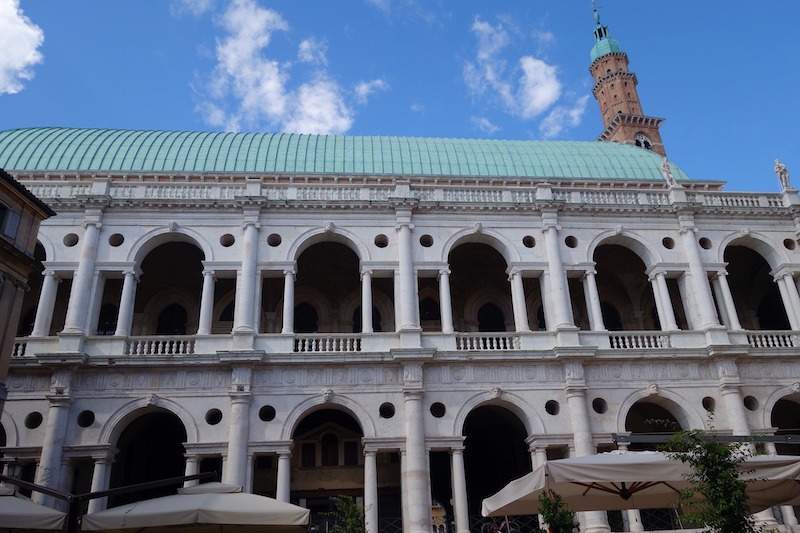Would you like to discover the Basilica Palladiana with a local and expert Vicenza tour guide? The Palladian Basilica (Basilica Palladiana) a is among the most iconic landmarks of the Veneto city of Vicenza, Italy. Its grandeur and beauty make it a true gem of Italian Renaissance architecture, seamlessly blending classical forms with innovative and elegant solutions. Its rich history and distinctive features make it an attraction worthy of admiration and exploration, providing a unique and unforgettable experience for art and architecture enthusiasts alike.
Some interesting Facts with an expert Vicenza Tour Guide
- The Palladian Basilica, designed by architect Andrea Palladio, was built in the 16th century on the site of the Palazzo della Ragione. Palladio’s design incorporated two existing buildings and featured a series of loggias intended to surround the entire palace. However, this was never completed.
- Palladio ingeniously solved the complex structural issues, arising from the varying distances between pillars inherited from earlier construction, by using the “serliana” a Venetian window, a classical architectural feature. This enabled him to conceal the differences without altering the arch’s dimensions, but rather by adjusting those of the side openings.
- The Basilica Palladiana is a three-story building adorned with a facade of pink and yellow Verona marble. The balustrade is adorned with statues by Albanese, Grazioli, and Rubini. The structure is defined by its classical loggias, which give the building an elegant and sophisticated atmosphere.
- Inside, the Basilica Palladiana houses a series of independent exhibition spaces that regularly host internationally renowned art and architecture exhibitions. Visitors can marvel at works by artists and architects from all over the world, immersing themselves in a truly unique and unforgettable cultural experience.
- The building was reconstructed by Palladio, who opted to name it “Basilica” in reference to the Roman basilica model and not the religious one we know today. Its name has remained the “Basilica Palladiana,” honoring its architect. Through various restorations, it retains its 16th-century appearance as designed by Palladio. During the Venetian Republic, it served as an important center for political and economic activities.
- During World War II, despite being listed among the monuments that were not to be affected by air strikes by the Allies, the Basilica was hit by an incendiary bomb, which destroyed its original roof. It was faithfully rebuilt with donated lumber from the Asiago Plateau.
- Another little-known fact concerns the upper floor of the Palazzo della Ragione, which houses a single large hall called the Council Hall, dating back to 15th century. This hall is covered by a majestic vault in the shape of an inverted ship, reminiscent of the Palazzo della Ragione in Padua, which is almost 150 years older than the one in Vicenza.
| Keep reading: A closer look at the Olympic Theater |

